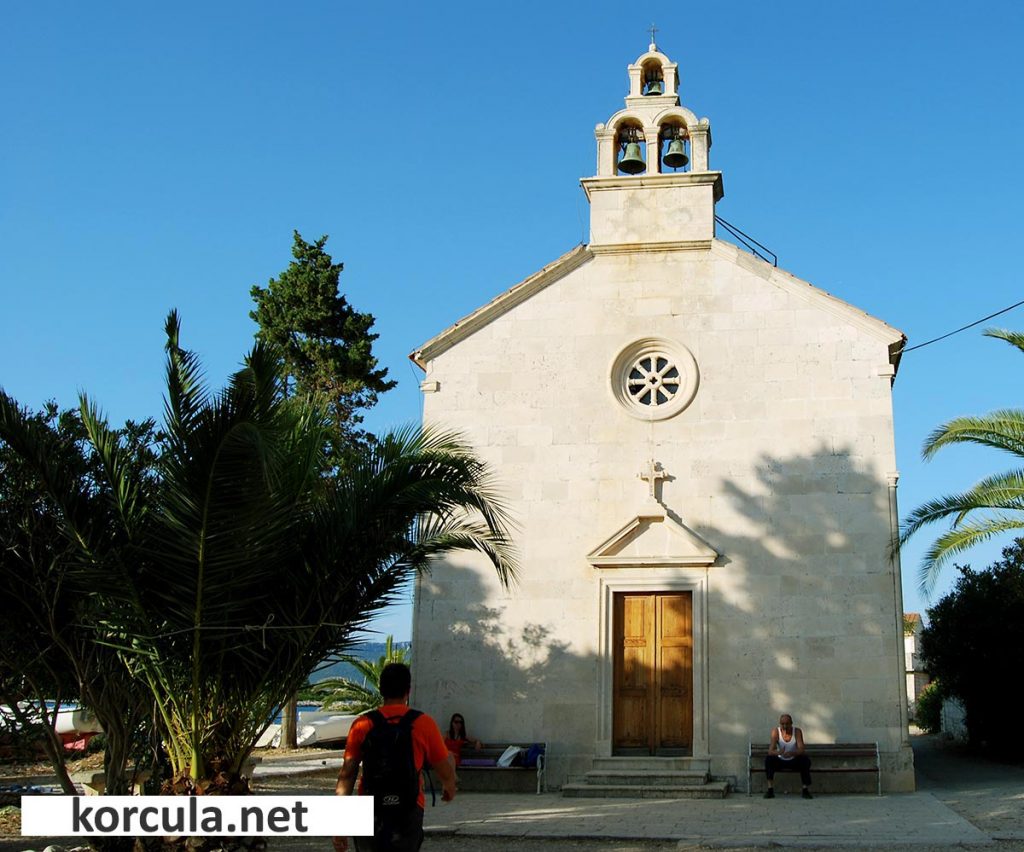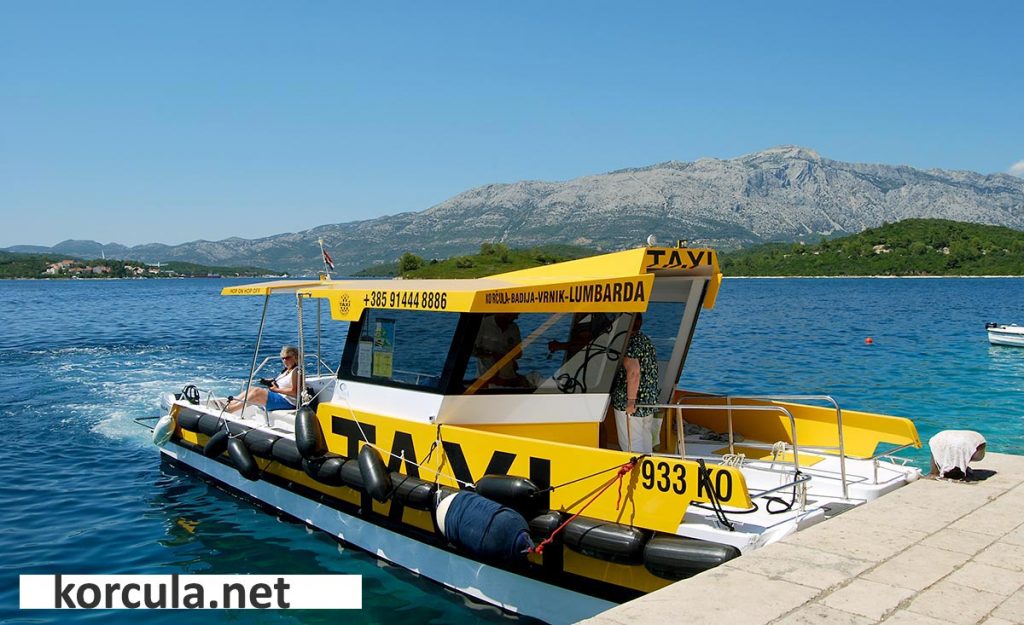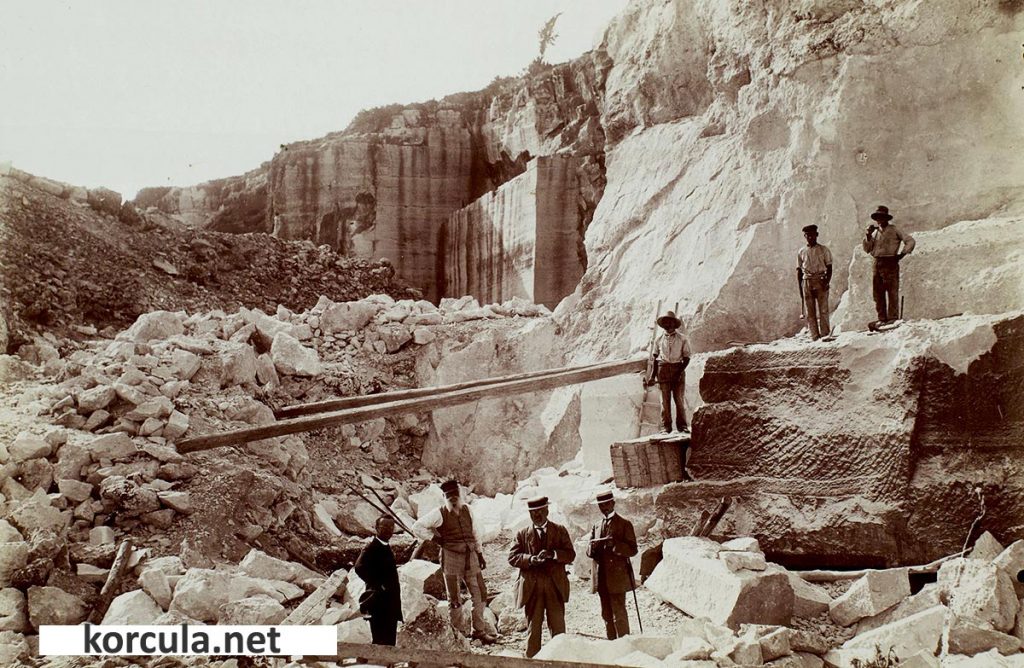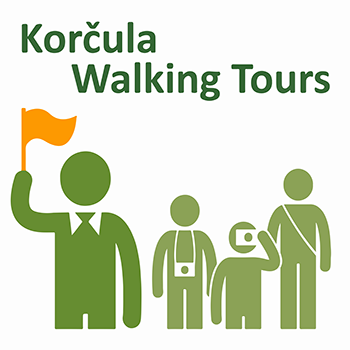Vrnik
Despite no cars, no road and no real shop, this intriguing island of stone treasures, shaded swimming spots and newly opened art gallery is the only one that is still inhabited in the archipelago.
The second-largest island in the archipelago offers the visitor shingle beaches in tranquil surroundings of a picturesque island village ideal for a day trip.
Previously an important source of stonemasons, sculptors and stone quarries, it offers the best insight into one of Korčula’s most important crafts.
The well-built houses around the island testify to the centuries-old craft of the local inhabitants, who numbered almost two hundred at the dawn of the 20th century.
Vrnik contains secluded swimming spots, crystal clear waters and constant reminders the visitor of the island’s centuries-old crafted heritage. This includes sculptor’s ateliers, sturdy houses and outsized buildings used to carve the island’s stone exports.
Good mooring facilities allow easy visits by boats.

History of Vrnik
If Badija was traditionally the island of learning and prayer (mind and soul), Vrnik is certainly the island of hand working and creating. The oldest and most numerous quarries of the Korčula archipelago can be found here. Now lying abandoned, formerly, twenty-nine of them were active and they provided a laborious and lucrative activity for the Korčulan community since Roman antiquity.
As a result, looking around the island, the visitor notices that it has been significantly modified by human activity. The island of shining stone in old pictures shows how it was practically bare of woodland due to the fact that its hills were used to extract high quality and much-valued limestone.
Popular Routes: Split to Korcula, Korcula to Split, Dubrovnik to Korcula, Korcula to Dubrovnik
The local limestone is of a thick, tough type (‘white as a seagull’s wings’) was the treasure on this island that traveled and enobled places far and wide beyond the Korčula archipelago.
Aside from Korčula town, Badija and Dubrovnik, the diligent handywork created permanent structures as far as Venice, the Hagia Sophia and the Budapest Parliament.
You will simply have to use your imagination to muster the sounds of quarried rock being picked out by groups of men with tools that would move large blocks from the inside of the island onto sled like wagons and loaded them onto boats. Examples of its resilience and permanence can be seen in the houses and churches on the island.
The oldest church is on the northern coast, a 17th-century baroque structure called Gospa od Pohođenja (Our lady of Succors) built in 1674.
Walking further along the seafront, there are numerous houses where the inhabitants of Vrnik (and their children used to live). Soon you arrive at a school, that served the local population’s children for almost one hundred years between 1868-58.
It seems difficult to believe now that this island was home to almost two hundred people over a century ago and that eighteen generations of teachers taught at the school. Today one part of the school has been preserved as a reminder of its past. The largest part of the building is Vrnik Arts Club, which turned into an art gallery that features works from local artists during the summer months. The other part has a high-level restaurant and souvenir shop that charges appropriate prices.
In the second decade of the 20th century, the use of cement began to erode the stone quarry tradition as it begins to make the skills of the stonemasons obsolete.
As the century wore on, the increasing use of explosives to help with extraction reduced the need for laborers to extract it. The downward curve would continue.
After the second world war, the building of the large shipyard in Korčula begins to deprive the quarries of Vrnik of its manual labor force, resulting in an increased decline which resulted in increasing emigration from the island.
By the 1980s, only a summer school of sculpture in Buffalo bay existed as a living reminder of those craftsmen in stone. One of Korčula’s most well-known sculptors Lujo Lozica had his island atelier in Buffalo bay, the small secluded part of the island facing Lumbarda.
The onset of tourism in the post-war era resulted in Vrnik being largely turned into a retreat for holiday homes for those seeking to escape the hustle and bustle of Korčula over the summer. Today it comes alive in the summer as visitors flock to see its somber tranquility and bask in its unique islet charm.
The regrowth of trees, forests and greenery on the island leaves a unique combination of fading gentility, recovered forests and an unchanging, welcoming seashore that is today much enjoyed by locals and visitors alike.

Water taxi on Vrnik
Where to stay
- Beach house on Vrnik island – situated in the very heart of the village, at the waterfront, this beach house is one of the rare places available for rent on the island.
- Amazing boutique hotel in the heart of the village – a unique beachfront holiday apartments
Where to Eat
The island has two restaurants that are serving local dishes. The opening times are June to September, from midday onwards.
- Restaurant Škoj offers food that is good value for money.
- Vrnik Arts Club is slightly more expensive.
When to Go
June to October is ideal although it is also possible to visit outside the warmer months.
How Long Should You Visit
A day trip although spending the night on the island is also a possibility.
Best Things to do in Vrnik
- Swim and snorkel on the southern shaded part of the island
- Do a self-guided tour of the remains of the formerly thriving community of stonemasons
- Relax on the 150 square meters of beaches facing Korčula and the archipelago
- See local art at the newly opened art gallery
- Hike through the forested part of the island, with its very own deep woods.
- Play bowls with stone balls under the sun while listening to the waves
Beaches and Swimming
There are several swimming spots on the island. Within the village of Vrnik on the island, there are some shingle beaches that are suitable for adults and children.
The beach with the stone jetty facing Planjak island is typical of the crystal clear waters of the island. Walking along the seafront towards the hamlet of Vrnik, there are numerous other quais and adequate places to either swim or jump into the sea.
On the eastern part of the island, there is a pine-shaded section that is an ideal place to spend a day swimming when the heat of the other parts of the archipelago becomes unbearable.
Follow the path towards Peljesac and eventually, you will come to a shaded section with a view of Lumbarda and Sutvara.

More about Vrnik
The stone quarries on Vrnik were used from the Neolithic times. There is some evidence that Roman emperor Diocletian was using Vrnik’s stone to build his palace in Salona near Split. From the 14th century onwards, a stone was exported to Dubrovnik, Sibenik, and Zadar. Vrnik has been permanently inhabited since the 17th century. Before that, the stone-masons lived in neighboring places – Korcula town, Lumbarda, and Žrnovo and were commuting daily, in the dawn to the island. During the week they would, sometimes, even overnight in the workshops on the island. Later on, they started to build houses on the island and move there together with their families. In some periods, there were up to 600 people working in these quarries. The last larger stone excavation on the island was at the end of the 1960s and in 1966 the whole business seized down. The oldest building in the village is Kaštil, located in the southeastern part of the island. It was built in the 15th century, in Gothic-Renaissance style, as a summer residence of Korcula noble family Gabrielis – Ismaeli whose palaces are still standing in Korcula old town. The oldest church in the village was designed by Toma Azali and was built in 1674. Electricity has reached the village in the 1950s while the freshwater pipeline arrived at the island in the mid-1980s. See some more facts about the history of Vrnik here. See also some info about the history of Korcula.
Vrnik is a popular island to visit for anyone who is visiting the area around Korcula Old Town, Lumbarda or Zrnovo. Situated within the archipelago of dozen of small islands and islets in the channel between Peljesac and Korcula island, the island is easily reachable by local water taxi boats from either Lumbarda or Korcula. Vrnik is the only inhabited island in the archipelago. It features a peaceful village that gets almost deserted in the winter. In summers, visitors are attracted to the lovely pebble beaches created by the erosion of the debris from the Island’s stone quarries. The stone from these quarries was used to build many Adriatic towns including several palaces in Dubrovnik, Venice, Vienna, and Washington. The Island is 850 meters long and 450 meters wide and covers an area of 0.35 square kilometers.
